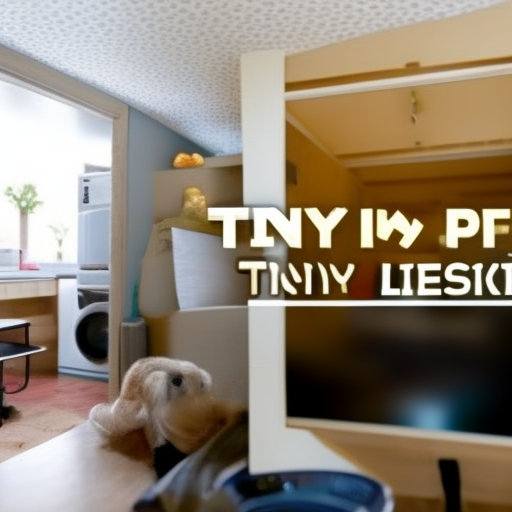Nowadays, more and more people are recognizing the advantages of living a simpler lifestyle. A growing trend, particularly popular among young adults, is the tiny living lifestyle – living large in tiny spaces. Many are drawn to the lifestyle, as it offers an opportunity to downsize, save money, and live with less of an environmental footprint. This article explores the tiny living lifestyle – from the benefits and challenges, to the creative design solutions that make it all possible.
Benefits of Tiny Living
Living tiny has become increasingly popular as people seek simpler, more sustainable lifestyles. Here are some of the :
- Affordability: One of the most significant advantages of tiny living is its affordability. Smaller homes often cost less to build, maintain and furnish, freeing up money for other things.
- Eco-Friendly: Tiny houses have a much smaller environmental footprint than traditional houses, using fewer resources, including water and energy. A smaller living space means a smaller carbon footprint.
- Simplicity and Less Clutter: With less space, people living in tiny homes are forced to declutter and live more simply. It can lead to a more fulfilling life with fewer distractions and more time to focus on what really matters.
Tiny living can also be liberating. Imagine owning a home that can go anywhere with you, allowing for endless adventure opportunities. Whether it is living close to nature, exploring national parks or travelling the country, the possibilities are endless.
With more and more people choosing tiny living, it is clear that the benefits are many. From minimalism to environmentalism, these homes are revolutionizing how we live and proving that bigger is not always better.
Adapting to a Tiny Home
Living in a tiny home can be a daunting task, but with a little bit of creativity and resourcefulness, it can be an incredibly fulfilling experience. One key to is to make the most of every inch of space available. Consider multi-functional furniture, such as a sofa bed or a coffee table that doubles as storage. Hang shelves and hooks to maximize vertical space, or invest in furniture that can be folded and tucked away when not in use. With a little bit of thought and planning, your tiny home can feel spacious and cozy, rather than cramped and claustrophobic.
Another important aspect of is to prioritize what you truly need and let go of excess possessions. Embrace the minimalist lifestyle by getting rid of duplicates or rarely used items. Hold onto items that serve a purpose or bring you joy, but don’t let sentimental attachment cloud your judgment. Remember that the more items you have, the harder it is to keep your tiny home organized and clutter-free. By prioritizing what is truly necessary and letting go of excess possessions, you can create a peaceful and functional living space that is uniquely tailored to your needs.
Utilizing Space Efficiently
When it comes to , it’s all about maximizing every inch of your area, whether you’re at home, in the office, or commuting. Here are some tips to help you make the most of your space and stay productive:
1. Get Creative with Storage: When you’re working with limited space, it’s important to think outside the box. Consider using vertical space by adding shelves or hanging organizers. Use dual-purpose items like ottomans that also have built-in storage, or try using the space under your bed. With a little creativity, you can find a place for everything.
2. Optimize Your Commute: If you’re someone who’s on the go all the time, it’s essential to optimize your commute. One simple solution is to keep a spare set of essentials in your car or bag to save time packing and unpacking. Use a planner or digital calendar to stay organized and ensure you’re always making the most of your time. By optimizing your commute, you’ll be able to stay productive and focused on the tasks at hand.
By implementing these tips and tricks, you’ll be able to make the most of your space, stay organized, and increase your productivity. Remember, it’s not about how much space you have, but how you utilize it.
Designing for Minimalism
When , it’s important to focus on the essentials. Less is more when it comes to this design philosophy, and it’s all about creating a streamlined, clean visual aesthetic that still packs a punch. Take Apple, for example: their product design shows minimalism at its finest. They embrace simplicity, and people love it.
To achieve this type of design, start by getting rid of any unnecessary elements. This could mean reducing the number of colors, simplifying shapes, or decreasing the amount of text being used. Use negative space to highlight the important elements, and keep in mind that every element should serve a purpose. Another key to minimalism is consistency. Use a limited color palette and stick to a singular font family to create a cohesive visual identity. Remember that minimalism should always complement functionality, and that less design can ultimately lead to a better user experience. Living small isn’t for everyone, but if you’ve caught the tiny living bug, there’s no turning back! With a bit of organization and creativity, you too can join the tiny living movement and make your small space feel bigger than ever. Embrace the freedom of living large in a tiny living space.